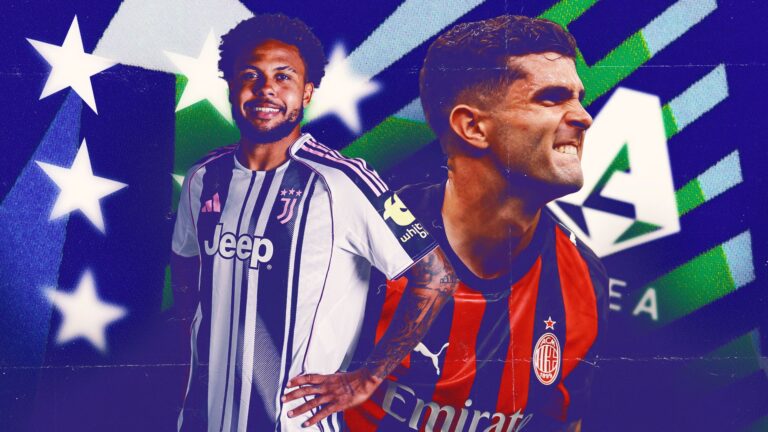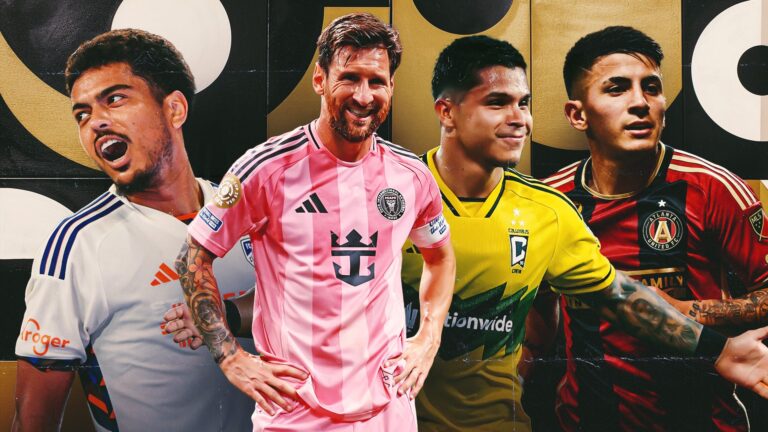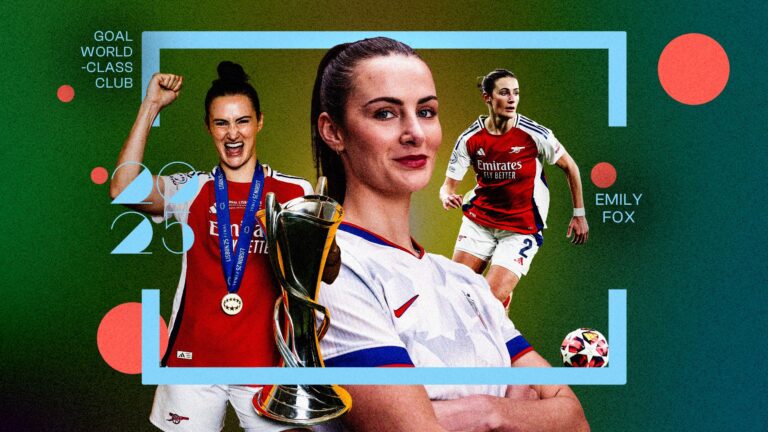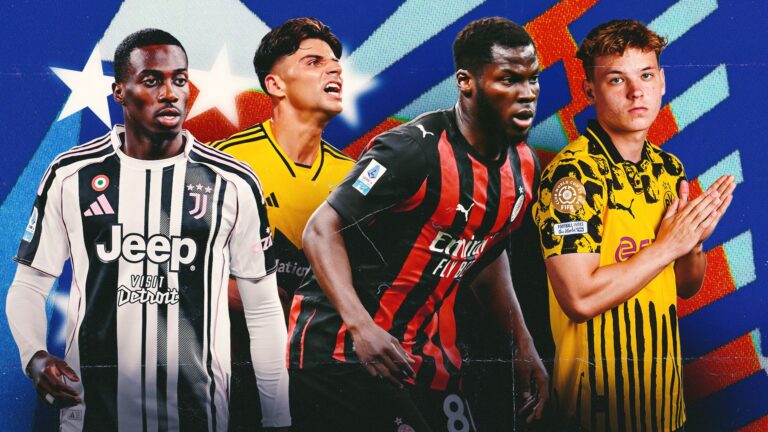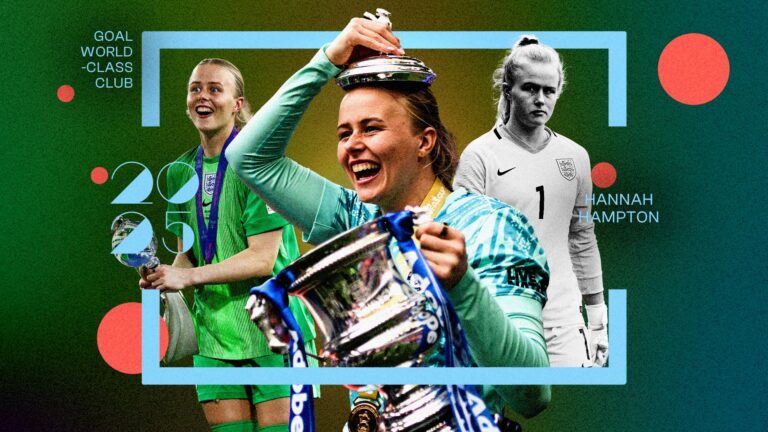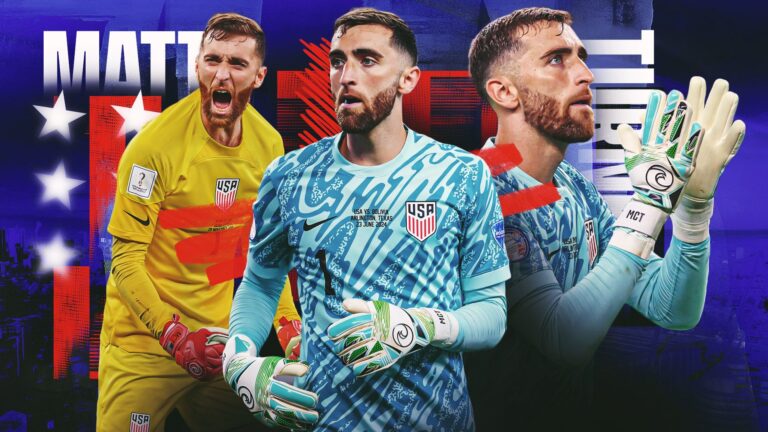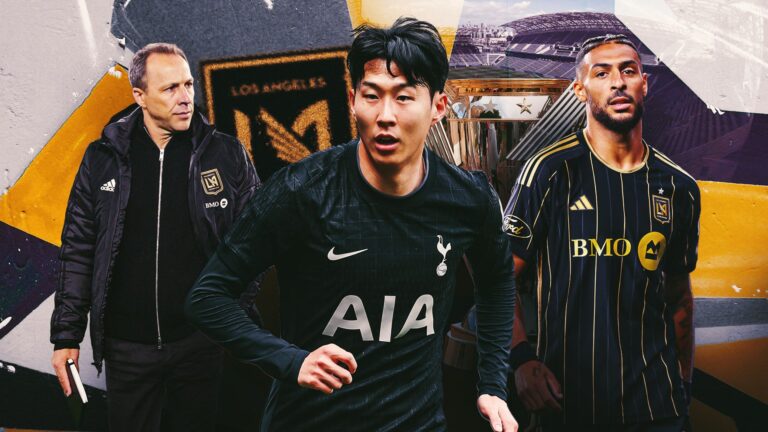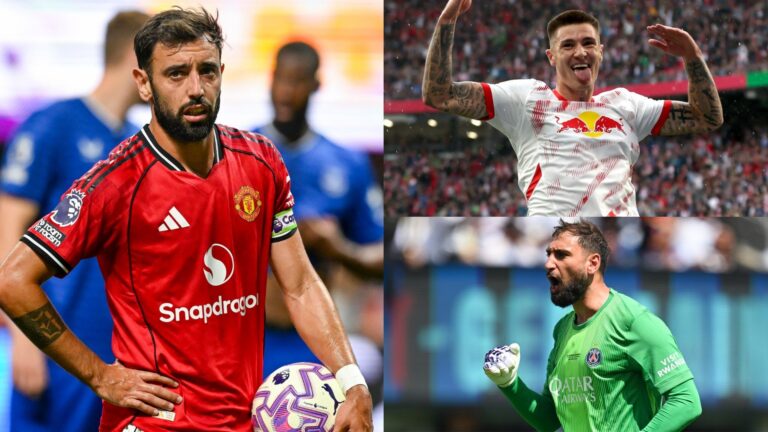You’d be forgiven if you assumed that انتر Miami would collapse after the Club كأس العالم. It’s an easy narrative to construct, a fair summation based on the events of the previous few weeks. Lionel Messi and Miami advanced through the group stage of the CWC, but looked truly exhausted in their 4-0 round of 16 loss to eventual runners-up PSG.
They picked up a few injuries along the way, and were emblematic of MLS’s struggles on the global stage – Miami is the only one of the three domestic league teams in the tournament to win a game – as they were wiped out by the European Champions on home(ish) turf.
The next bit would be easy to call: tired legs, more injuries, perhaps even a Messi fall off. It would not have been controversial to suggest that the loss to PSG would tip the dominoes and be the start of three immensely difficult months.
That narrative has taken about two weeks to disintegrate.
Miami have not collapsed. Instead, they look truly excellent, reborn and reinvigorated by a campaign in which they became the first MLS club to beat a European team in a competitive competition. Of course, Messi has been at the center of it all. The Argentine has scored twice in each of his last five league appearances – tying an MLS record for consecutive multi-goal games. Add two against Cincinnati on Wednesday night and he will have beaten it.
But it’s not just him. More broadly, Miami are a stronger side. They are better balanced, rightly structured, and more defensively steady. When Messi is on song, and the Herons have the structure around him, they are very hard to beat.
بالجم looks at some of the tactical tweaks that manager Javier Mascherano has made to avoid a post CWC hangover.







You’d be forgiven if you assumed that Inter Miami would collapse after the Club World Cup. It’s an easy narrative to construct, a fair summation based on the events of the previous few weeks. Lionel Messi and Miami advanced through the group stage of the CWC, but looked truly exhausted in their 4-0 round of 16 loss to eventual runners-up PSG.
They picked up a few injuries along the way, and were emblematic of MLS’s struggles on the global stage – Miami is the only one of the three domestic league teams in the tournament to win a game – as they were wiped out by the European Champions on home(ish) turf.
The next bit would be easy to call: tired legs, more injuries, perhaps even a Messi fall off. It would not have been controversial to suggest that the loss to PSG would tip the dominoes and be the start of three immensely difficult months.
That narrative has taken about two weeks to disintegrate.
Miami have not collapsed. Instead, they look truly excellent, reborn and reinvigorated by a campaign in which they became the first MLS club to beat a European team in a competitive competition. Of course, Messi has been at the center of it all. The Argentine has scored twice in each of his last five league appearances – tying an MLS record for consecutive multi-goal games. Add two against Cincinnati on Wednesday night and he will have beaten it.
But it’s not just him. More broadly, Miami are a stronger side. They are better balanced, rightly structured, and more defensively steady. When Messi is on song, and the Herons have the structure around him, they are very hard to beat.
بالجم looks at some of the tactical tweaks that manager Javier Mascherano has made to avoid a post CWC hangover.
Right, let’s get the numbers out of the way. Before the CWC, Messi was doing Messi things. He scored five in the last three games before the international break and CWC campaign. Miami won two of those and tied the other (the one draw was an agreeable point on the road against a good فيلادلفيا يونيون side).
At that point, he had scored 10 and provided five assists in 13 MLS appearances for the Herons. Not immense numbers by his standards, but they were solid.
The issue is, at that point, Miami weren’t a particularly cohesive unit. Messi might have been finding the net, but the structure around him was falling apart. Mascherano ball is still working itself out in real time, built not so much on tactical principles as the vibes of a Messi team. Sure, they wanted to keep the ball and win it back quickly, but these are general ideas – not foolproof setups.
And the Herons were undeniably unsuited to play in such a way. Yes, they were outpossessing teams at a comfortable clip, but they were disastrously bad at winning it back – and easy to play through as a result. It’s simple, in theory. To execute a high press, you need an agreeable combination of tactical nous and athletic players throughout the side.
The defenders have to be brave enough to play high and leave space in behind. The forwards need to have the legs to cut passing lanes. And the midfielders have to be able to jump and tackle once the forward line gets bypassed.
There are different variations of this, with teams these days setting up multiple structures to dispossess their opponent. PSG, for example, want their opposition to have the ball close to their own goal – because they know that winning it back in that third of the pitch is the easiest way to creating a goalscoring opportunity. أرسنال encourage teams into the middle, and rely on athletic midfielders to snuff out the ball there.
Miami are a bit more basic – going man-to-man at times, and counting on the fact that MLS teams will falter under pressure. It didn’t work. Miami were scored on, a lot, and were frighteningly easy to play through.
But the CWC seems to have changed things. There was always going to be a bit of a contradiction in the competition. Man for man, Miami are above the level of the vast majority of teams they play in MLS. Account for the Messi effect, and they are favored in pretty much every game they play in – if not expected to win.
The CWC gave them no such luxury. Sure, they were expected to beat Al-Ahly (they didn’t), but they were clearly a level below both Porto and بالميراس – at least, on paper. That forced Mascherano to swallow his ego a bit. He ditched the whole high-pressing, high-line thing, and instead called on his team to drop a bit deeper, soak up pressure, and lean on the Argentine to make things happen.
It worked, especially against Porto. Miami rode their luck, won the key positional battles, and relied on Messi to set up one goal and score another. This was not tactical genius as much as flexibility, proof of concept that Miami could change a little and still get results. PSG, in the end, were simply on another level. But the learnings from the CWC were clear.
Since then, Miami have been a bit more willing to not have the ball. Against Nashville and New إنجلترا, they still had more of the ball than their opponent, but their possession percentages both fell below their season averages. New England outshot them, 16-13, and put twice as many attempts on target. But in all three games, they were remarkably more resolute, and harder to play through.
Part of that is down to structure – especially out wide. In the past, Miami’s fullbacks pushed high up the pitch, and weren’t necessarily asked to hold width. Jordi Alba went a bit of everywhere. Marcelo Weigandt was encouraged to play off the cuff. The idea, in theory, was to create chaos, bring numbers into the attack.
More recently, though, they have stayed wider and deeper. The result is a more structurally sound team. In the past, when Miami lost the ball, the fullbacks had to sprint back and cover the spaces they had left exposed. Now, they’re already there, and ready to contribute more in the attacking build up than scamper into the final-third and offer an option.
The heatmaps outline the strategy perfectly. Both Alba and Weighandt’s average positions are in their own half, tucked into their respective wing.
,,
That varies wildly from the way they were set up in a 4-1 loss against Minnesota before the CWC – where the duo were effectively camped in the opposing half.
,,
This helps in two ways. The first is that Miami have more numbers to defend with – which is generally quite a good thing. The second is that it helps them control games. Athleticism and pace is not this team’s strong suit. Allowing their wide defenders to settle on the ball and dictate play sets Miami up more effectively to go forward and create.
The midfield strategy has also been tweaked slightly. Sergio Busquets, it must be pointed out, is a wonderful footballer who has helped reinvent the way the sport looks at defensive midfielders. But he has struggled immensely at times this season. His issues are, in effect, a repeat of what happened during his final years at Barcelona.
Busquets is slow, and when the team around him can’t make up for the vast distances in a wide open midfield, he becomes something of a liability. Busquets as a footballing entity is made to have the ball and get away with fouls to win it back in tight spaces. Sure, he can function as an auxiliary center-back, or even work higher up the field, if needed.
But he is a No. 6 in its purest form, someone who has never really had any legs – but adapted without them. Miami’s solution last year was to insert the active Yannick Bright into the side and cover all of the spaces Busquets couldn’t reach. It’s a sound strategy, such is the energy of the former University of New Hampshire midfielder. But he has picked up a knock, and Miami have certainly missed him. Their solution, in recent weeks, has been to squeeze the spaces.
Benjamin Cremaschi has been key in the effort. The youngster is nominally an attacking midfielder, but in the Miami side, he is best used as an all-action box-to-box presence, someone who can put out fires and ensure that Miami’s midfield is resolute – more الأردن Henderson than Luka Modric.
And there is no shame in that. His performances have ensured that Miami are steady, and less easy to play through.
And so we arrive at the guy everyone really wants to talk about. Miami made all of the right noises last year about not having to lean on Messi at times. And there’s something to be said for that. Messi is excellent, but he isn’t invincible. He is 38 years old, and increasingly less likely to be able to single-handedly carry a team. As Mascherano told BALLGM before the season, the only real way to coach Messi is to “give him some ideas” and get out of the way.
Risky? Sure. But this is the best player to ever do it. And while the team has gotten more solid and لويس Suarez has continued to churn his old legs into life, Messi still floats. With a better structure around him, the Argentine has simply been magnificent. Sure, the signature goals are here – just look at this beaut against Montreal.
,,
But he’s also done his fair share of smarter stuff, too, capitalizing on some loose passes and reacting to opposing mistakes – with a worldie or two thrown in for good measure.
,,
Sure, these are basics, but they paint a larger picture of Messi in top form.
What comes next will be interesting. Miami has three more MLS games before they start كأس الدوري play. They face Cincinnati, one of their main rivals for Eastern Conference glory, twice in the space of 10 days. Those could be a season-defining duo of fixtures. Win them, and Miami look like favorites. Lose them, and they probably get knocked down a peg.
Leagues Cup will further complicate matters. Miami won the competition in 2023 to mark Messi’s arrival in America. This time, the competition has been condensed, and Miami will only play against Mexican sides in the group phase. That will likely be a refreshing change of pace for the Herons, but also a significant challenge.
There is good news on the injury front. Bright is back in training, while Ian Fray, Noah Allen and Drake Callender are all on the mend. Miami is getting fit at the right time. There is also, more broadly, transfer talk abound. Rodrigo De Paul has been linked with a move away from أتلتيكو مدريد and into MLS. It would seem to be a complex deal given the restrictive salary setup of the league, but it might not be entirely impossible to get one of Messi’s international teammates into the side.
And from there, the Herons will just have to rely on their star, and hope that he continues to produce – learning from the CWC and proving that with a new structure that they can truly push for an MLS Cup that they are expected to win.


